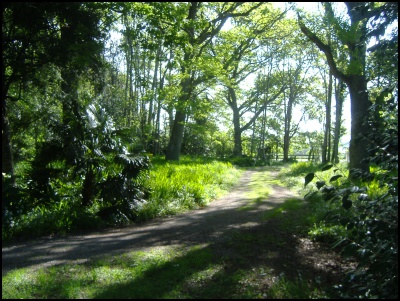Tree protection a vote for future generations
Taking the Long View: Tree protection a vote for future generations
Gord StewartHow much is a 100-year-old totara tree worth? Is it worth more than $468.57?
That’s the value put on them – in the form of a fine – when a rural property owner in my area felled up to 70 totara trees a few years back. The act would have passed quietly had the trees not been on public land, a fact the property owner claimed he did not know.

Oaks in the Woodlands
Convicted of offences that could have meant up to two years in jail and a fine up to $300,000, the property owner was fined $32,800 – or about $468 per tree.
This case raises an interesting point. Had the trees been on his own property and not otherwise “protected”, there would have been no offence and no fine. Grow for a 100 years and gone in an instant. No reasons required. No questions asked.
My interest in protecting trees – particularly on private property – increased recently when our local council was reviewing the issue and an arborist came by to assess 10 English oaks protected under the District Plan.
These oak trees, which can only be described as magnificent, and a towering tulip tree protected under a separate covenant dominate a woodlands in the front of our 1.7ha property. It was a major draw when we bought the place – love at first sight, really.
Retaining more tree cover can help slow the country’s staggering rate of biodiversity loss. Protecting native trees such as totara and kauri is particularly important for this.
Among other things, trees serve as a home and refuge for wildlife and act as a carbon sink. They provide amenity value for all of us and help make the landscape more varied and interesting.
The council review, and proposed changes to tree protection in the district, pushed me beyond interest into action.
The trees were assessed using what’s known as the Standard Tree Evaluation Method (STEM). STEM consists of a 20-point checklist and a scoring system under three areas: condition, amenity and notability. Add up the points and each tree (or group of trees) receives a STEM score.
The draft plan set a STEM score of 140 for a tree to be worthy of protection. Our oaks came in at 141. Unbelievable, I thought. How could trees like this just scrape over the line?
One reason they did was a gross inaccuracy in the estimate of their age. Recorded at 40+ years, they are, in fact, over a 100 years old. (This correction alone would have given them a STEM score of 153.)
The local historical society identified numerous other trees similarly misclassified. How many would have resulted in a score under 140 and, thus, lack protection with the proposed plan change?
This is important as short-term self-interest too often prevails in decisions relating to trees on private property.
When a dairy farm across the road from us sold recently the new owner immediately tore out all the hedges and cut down all the trees (many oaks just like ours) except those along a stream at the back of the property. Further along the road, it was chainsaw time for two groves of six to eight large, very old trees to make way for a new irrigation system.
Council noted that some 22 percent of protected trees documented in the previous (2008) assessment no longer exist. It’s hard to believe they all just up and died on us in the last eight years. How many of them may have been taken down in violation of their protected status?
And now the proposed plan change would reduce protected trees in the district by some 86 percent.
So I made a written submission on the plan change. Our Transition Towns group made a submission. And I presented on our behalf at Council hearings to consider the issue.
I suggested a lower STEM score. This would mean more trees are protected and it would allow for uncertainties in scoring such as the age of a tree.
I said more effective monitoring was necessary as a first step in preventing problems. And we need consequences that will truly deter willful damage to, and illegal removal of, trees.
Littlies and future generations don’t have a vote or a say. Their future is in our hands. They must rely on us to make decisions that are in their best interest. Even for things seemingly as simple as protecting trees.
Gord Stewart is an environmental
sustainability consultant. He does project work for
government, industry, and non-profit organisations.


 Gordon Campbell: Gordon Campbell On Trump’s Tariff Wars
Gordon Campbell: Gordon Campbell On Trump’s Tariff Wars Richard S. Ehrlich: Israel, Hostages, Thailand & Jobs
Richard S. Ehrlich: Israel, Hostages, Thailand & Jobs Binoy Kampmark: Trump, Tariffs And Russia - A Very Muddled Policy
Binoy Kampmark: Trump, Tariffs And Russia - A Very Muddled Policy Gordon Campbell: DeepSeek, And China’s Inexorable Rise
Gordon Campbell: DeepSeek, And China’s Inexorable Rise Martin LeFevre - Meditations: History Is Not A Game
Martin LeFevre - Meditations: History Is Not A Game Peter Dunne: Dunne's Weekly - ACT Looks Backwards
Peter Dunne: Dunne's Weekly - ACT Looks Backwards